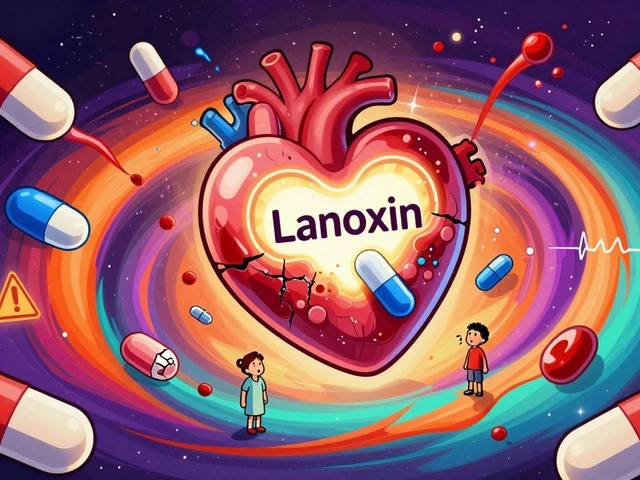Mood Stabilizer Options – Your Guide to Choosing the Right Medication
When working with Mood Stabilizers, drugs that help keep emotional swings in check, especially for bipolar disorder. Also known as mood‑balancing medicines, they are a cornerstone of long‑term mental health care. One of the most talked‑about options is Lithium, a mineral‑based treatment that has been used for decades. Another key player is Valproate, an anticonvulsant repurposed for mood control. Lamotrigine offers a different side‑effect profile, targeting depressive phases. Finally, many clinicians add Atypical Antipsychotics as adjuncts when monotherapy isn’t enough. These five entities form the core of any mood stabilizer options conversation.
How to Compare and Pick the Right Choice
Choosing a mood stabilizer isn’t a one‑size‑fits‑all decision. It starts with a clear diagnosis and then moves to a side‑effect versus benefit analysis. Lithium is praised for its strong anti‑manic power, but it demands regular blood‑level checks and can affect kidney function. Valproate works well for rapid‑cycling patients, yet it carries a risk of liver issues and weight gain. Lamotrigine shines in preventing depressive episodes, though you must titrate slowly to avoid rash. Atypical antipsychotics such as quetiapine or olanzapine can smooth out both highs and lows, but they often bring metabolic concerns like increased cholesterol. Think of the selection process as balancing three factors: efficacy, safety, and personal lifestyle.
Many readers wonder where to get these drugs affordably. Our collection of articles repeatedly points out that buying a cheap generic version from a reputable online pharmacy can cut costs dramatically. Guides on “Buy Cheap Generic Lipitor” or “Buy Cheap Generic Gabapentin” illustrate the same steps: verify the pharmacy’s licence, check for a valid prescription, and compare prices before committing. The same diligence applies to mood stabilizers—whether you’re ordering lithium carbonate or a generic valproic acid. Understanding the market helps you avoid scams and stay within budget while maintaining treatment quality.
Side‑effect management is another piece of the puzzle. Regular monitoring isn’t optional; it’s a safety net. Lithium requires quarterly blood tests, while valproate needs liver function panels every few months. Lamotrigine’s titration schedule can prevent serious rashes, and atypical antipsychotics call for lipid and glucose monitoring. Integrating these checks into your routine can turn a potentially risky medication into a well‑controlled tool. Practical tips from our “How to Safely Discontinue Sulfasalazine” and “Stress and Stomach Ulcers” articles showcase proven methods for tapering and lifestyle adjustments, which you can adapt for mood‑stabilizer regimens.
Beyond the pills, the surrounding environment plays a big role. Stress, sleep patterns, and diet can amplify or dampen the drug’s effect. Our piece on “Stress and Stomach Ulcers” explains how chronic stress spikes cortisol, a hormone that can destabilize mood. Applying that knowledge, you might pair a mood stabilizer with stress‑reduction techniques like mindfulness or exercise. Similarly, nutrition guides like “How Diet Impacts Skin Itching” remind us that what we eat can influence inflammation and, indirectly, mood stability. Think of medication as one column in a house; the other columns are lifestyle, therapy, and support networks.
Below you’ll find a curated list of articles that dive deeper into each medication, compare costs, outline safety steps, and share real‑world tips for buying online. Whether you’re new to mood stabilizers or looking to fine‑tune an existing plan, the resources here aim to give you the confidence to make informed choices and keep your mental health on track.
Lamictal vs. Other Mood Stabilizers: Detailed Comparison of Lamotrigine and Its Alternatives
A thorough comparison of Lamictal (lamotrigine) with top mood‑stabilizer alternatives, covering mechanisms, side effects, cost, and practical switching tips.





